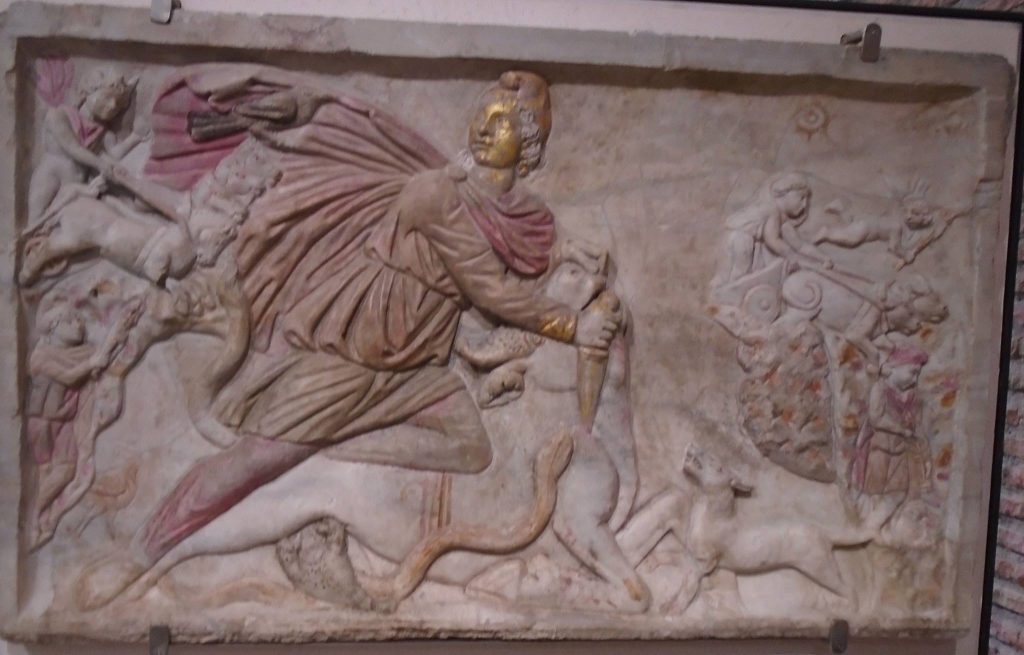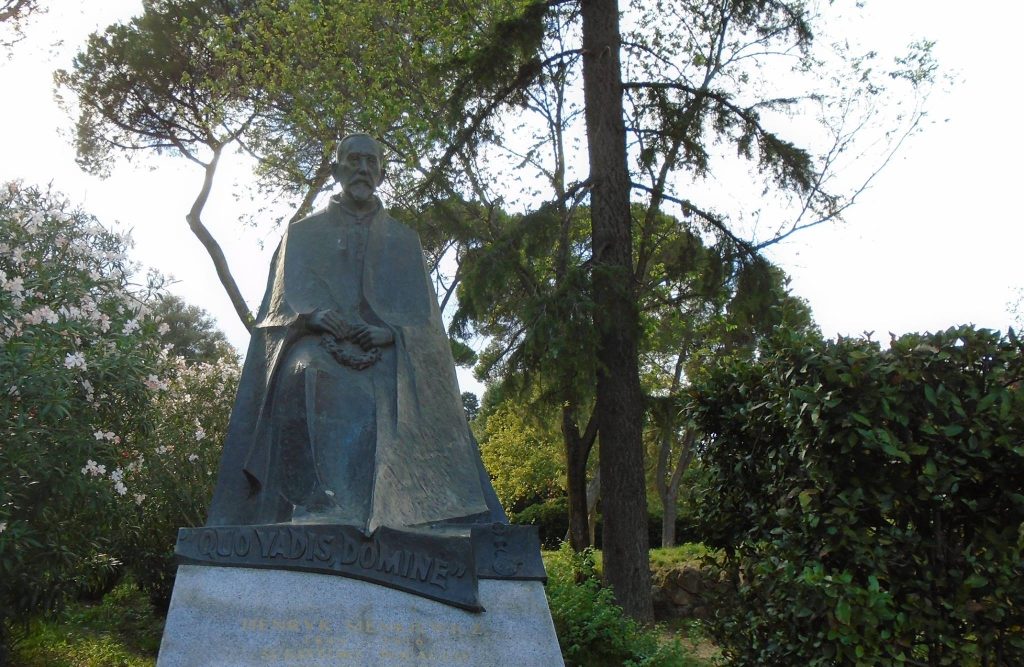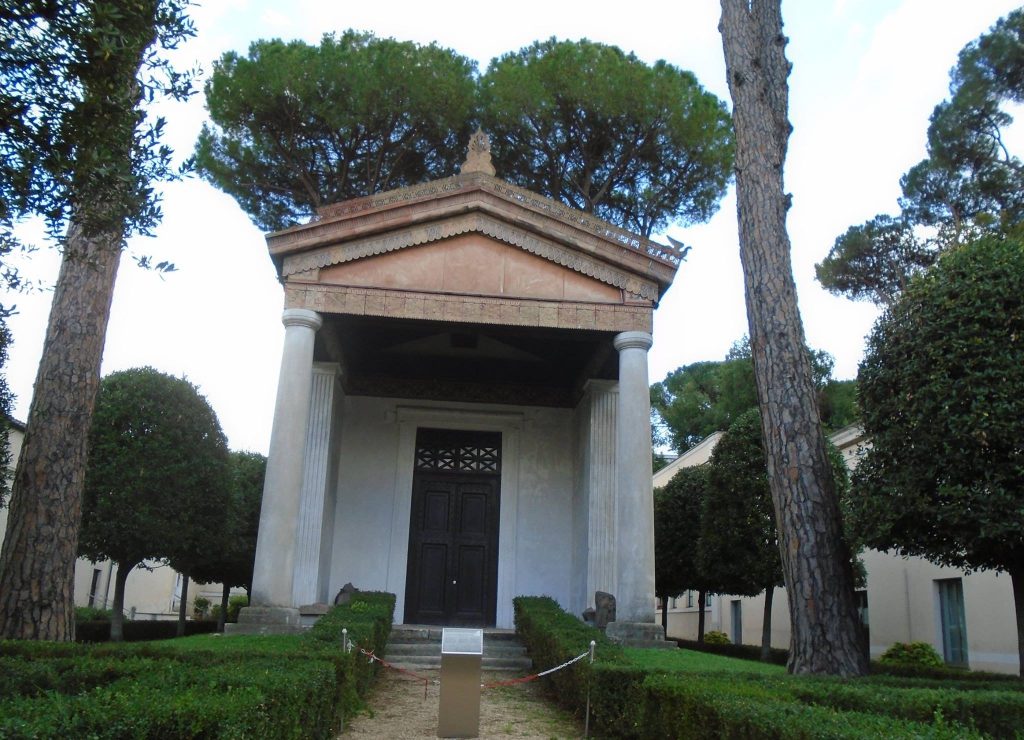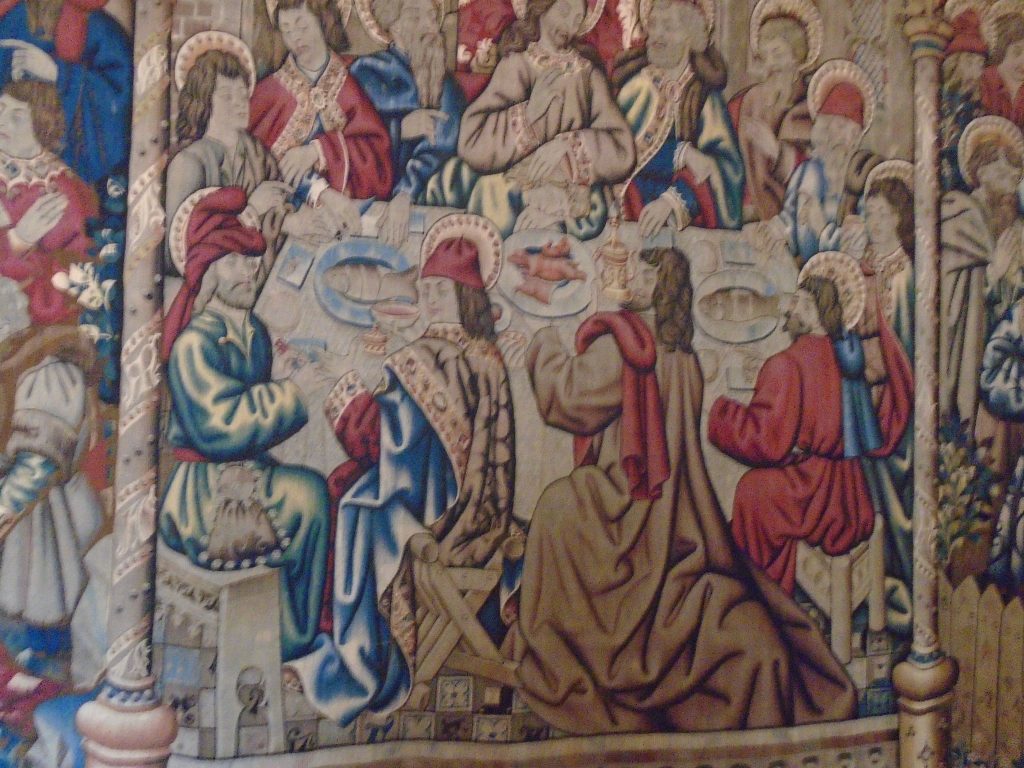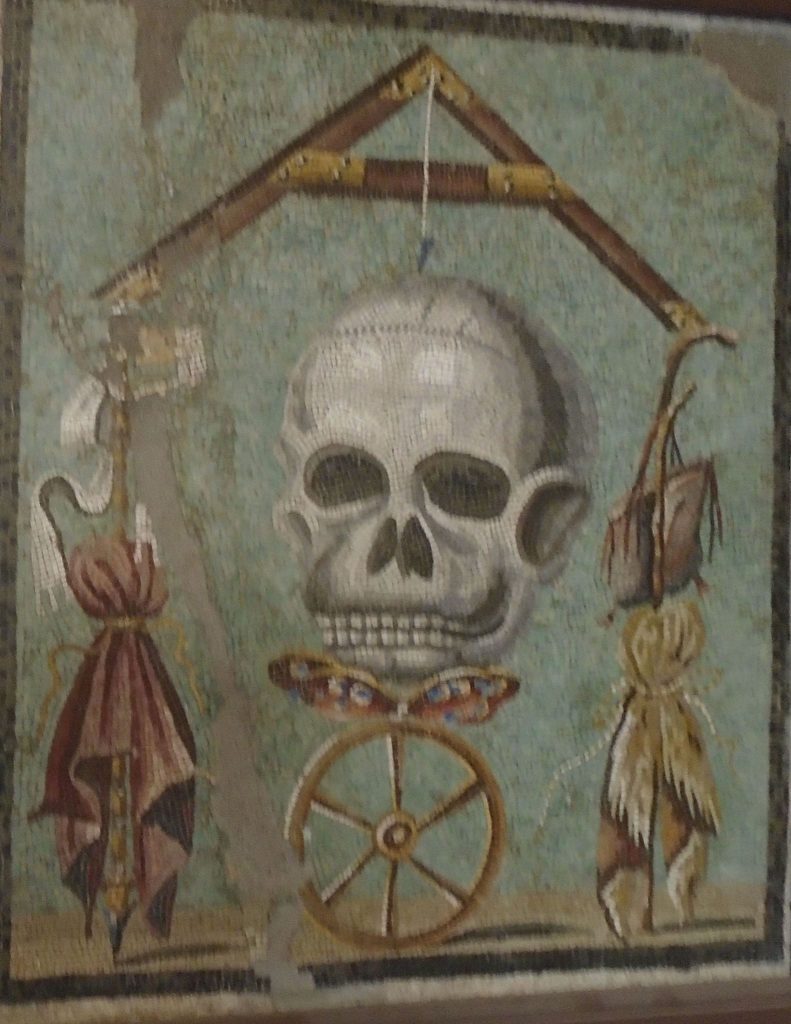Travel is great and so is coming home. The flight back was tight, with almost zero leg room. The flight over was much better. Bigger plane. The plus side of being stuck on a plane for a long time is that you get an enforced time to think and there was a lot to think about after seeing so many ancient, interesting and beautiful things.
My strategy for coping with the boredom of long flights is to assign myself some reading and studying. I then procrastinate. Time always goes seems to race along when you are putting off something you are supposed to do. I channel the immense power of procrastination.
Anyway, I thought I would dump the last of my pictures from the Italy trip.
The first picture is Mithra. Mithra was a god of Persian origin. The religion became very popular in the Roman Empire, especially among soldiers. For a while it was a competitor to Christianity, but it had largely gone out of business by the end of the 4th Century.
The next photo is a statue of Henryk Sienkiewicz author of the novel “Quo Vadis.” He sits in the Villa Borghese. The book concerns and the title comes from the meeting of St. Peter and Jesus. St. Peter was leaving Rome along the Appian Way to avoid the persecution of Nero. He ran into Jesus coming the other way. Peter asked Jesus, “Quo vadis,” Latin for where are you going? Jesus answers that he is on his way to Rome to be crucified again. This gives Peter the courage to go back to Rome to be with the persecuted Christians. I will let you recall or look up how the story ends. A few movies have been made base on the book, which won the 1905 Nobel Prize for literature. Sienkiewicz’s other great work is his world famous … in Poland trilogy about 17th Century Poland. I was surprised to find him in an Italian park, so I took a picture.
Third is a reproduction of an Etruscan temple it is at the Villa Guilia.
Next is part of a tapestry in the Vatican, followed by a skull mosaic form the Archeological Museum in Naples. It is an interesting picture. It is like one featured in the introduction of the HBO series “Rome.” Last is Dante and his “Divine Comedy.” Dante straddles the period between the Middles Ages and the Renaissance, leaning a little more into the Middle Ages. He was the first major author who wrote in Italian, instead of Latin, and so is considered the father of the Italian language.

